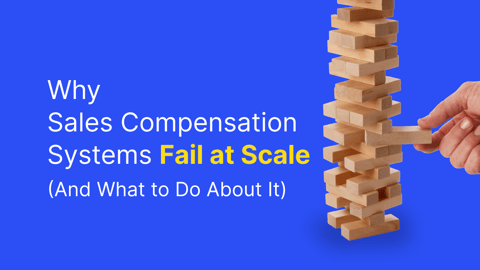In times of crisis, most of us seek out ways to retain control. The more chaotic our environments become, the more we try to control them. The more we try to control them, the more frustrated we become. And the cycle continues.
We can't control that we can't leave the house.
We can’t control health and wellness timelines.
We can't control that most prospects aren’t buying right now.
The most effective way to regain some of that control is to understand the difference between what you influence and what you control.
Our eBook Managing RevOps in Crisis talks about a few of these: how to take care of your humans, change commercial terms, and how to pressure test your pipeline.
In this post, we’ll delve a little deeper into three specific things you’re in control of during the sales process:
- Rethink what adding value means
- Refactor your sales process
- Reset personal and team boundaries
Rethink what adding value means
As a sales person you need to bring value to every interaction, but what does it really mean to add value?
Sometimes your product drives the value but other times the value is in the relationship you're building that will continue to have impact after the pandemic is over.
Either way, the potential to add value emerges when you take the time to understand the challenges people are facing. Now, more than ever, empathy and active listening needs to inform value.
A lot of folks think of this as: "Hey, I saw you follow XYZ on LinkedIn, want a demo?"
Jumping to the demo right away during the good times turns people off, nevermind doing it in the middle of a global crisis. Take the time to listen to what prospects need so you can clearly identify the value you can bring both in the short and long term.
Bring value to your interactions by:
- Enabling your sales team with content to help prospects. Avoid using fluffy, self-serving jargon with no real potential to improve their business.
- Helping customers remove business roadblocks.
- Creating free offerings to pilot and purchase.
As reps, we need to ask ourselves:
“Is this opp real?”
What you influence:
- Why buy
- Why buy now
- Why buy us
What you control:
- How frequently you engage with prospects
- How many contacts you engage in an account
- How you forecast deal size and close dates
- How you manage next steps
- How you maintain an healthy pipeline of realistic deals
Refactor Your Sales Process
We’re all at home and the normal workday structure is upended. Personal habits are disrupted, businesses operations are disrupted, and your buyers may be silent.
As we all wait to move into the next phase, you can choose how you interact with prospects. You can choose to:
- Wait. Sit on your hands and wait for the world to change. If you wait, you will need to initiate an internal sales process the day after a purchasing freeze lifts – by that time it will be too late; a competitor will have already won the deal.
- Force. Try to force the issue. This approach may make you look like a jerk and you will end up losing the deal because you can't control the purchasing freeze anyway.
- Influence. Build relationships with buyers and ready your sales process. You’ll have a real pipeline to hit the ground running when the purchasing thaw starts. Building relationships with buyers now will bring you closer to signing the deal quickly.
Instead of waiting or forcing, focus your time and resources on influencing what’s in your control. Consider putting into action previously resisted approaches or those you may have put on the back burner so you can drive the conversation forward with prospects into the next phase.
Give them a puppy
Imagine you have someone on the fence about getting a puppy. They may not want to get a puppy right now, but if you put a puppy in their lap, it’s going to be hard for them to give it back.
With budget cuts impacting every customer, only the must-have SaaS solutions will keep their full customer base. Product-led growth is a way to move past this, and there are a few ways to apply it to optimize growth, including free or pilot based product offers.
Is there a way to offer a free version of your product?
You can use this approach to build goodwill by allowing prospects to try your product - or specific features in your product - during this period for free. They will be more apt to buy when the budget becomes available if they can experience the value it brings to their business day-to-day, over a significant period of time – particularly since they still need to solve these problems!
What about free pilots?
You may not have done pilots in the past, but now is the time. You’ll want to consider a full pilot agreement and a memorandum of understanding defining how you will move to a formal contract after a successful pilot. They’ll help you move deals forward during a purchasing freeze, add value to your prospects, and help you build long-term relationships.
Do a deep dive on your funnel to determine who might be ready to flip the switch now and change your commercial terms to support the shift. The old rules don’t apply anymore. Give them a puppy.
While we’re talking about your sales process, now is a great time to optimize your processes through these new points of friction you’re finding in the funnel. A few things you can try:
- Update your rep onboarding to facilitate remote onboarding.
- Improve your CRM design to make it easier for reps to input data and managers to see what’s happening.
- Implement new tools and clean up your tech stack now that your ops team has heads-down time to focus on this.
- Identify and resolve long-standing points of friction in your funnel, like hand-offs between stages, and use this time to refactor them.
Reset Personal and Team Boundaries
Lastly, it is important to be there for your team but you also have to take care of yourself.
Try the following to help you manage the flurry of daily input:
- Limit video calls. Suffering from Zoom Fatigue Syndrome (ZFS)? We all are. Limit the number of calls you make or take per day leaving ample chunks for free thought and a walk or two.
- Bookend your day. Clearly demark the beginning or end of your day around a timeline that works for you. Try to make it routine. Turn on Slack notifications at the same time each day and encourage your team to do the same.
- Block your calendar. You still need blank space to think and be productive. Some companies were already on to meeting-free days with great results. Consider doing the same with everyone at home for the foreseeable.
Now is the time to listen and empathize with your prospects and help guide them through the challenges they face; to refactor your sales processes to best support your customers; to support your own team - and yourself - as we all move forward into the new normal.



